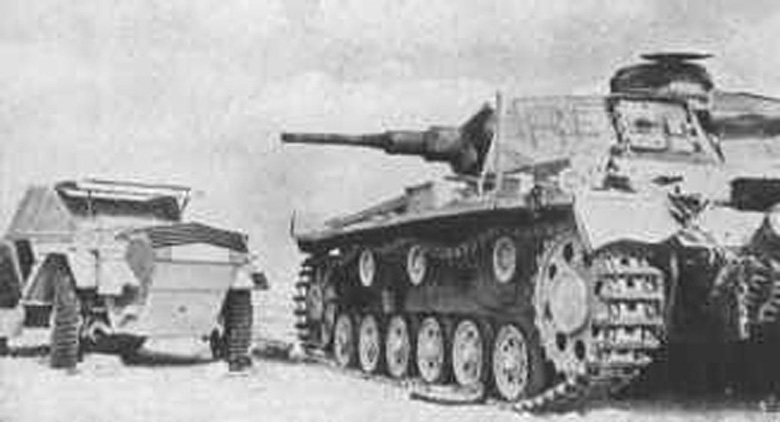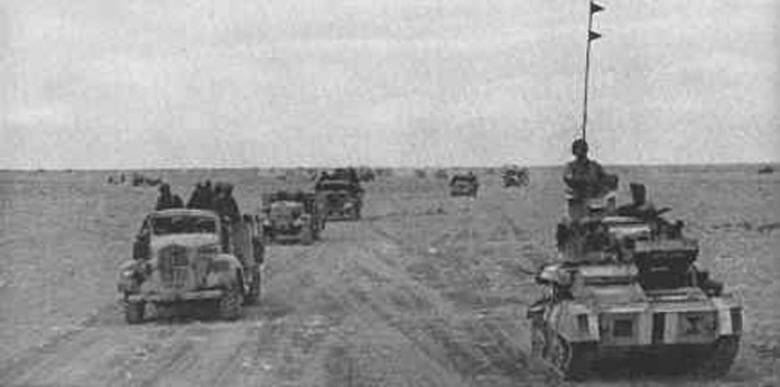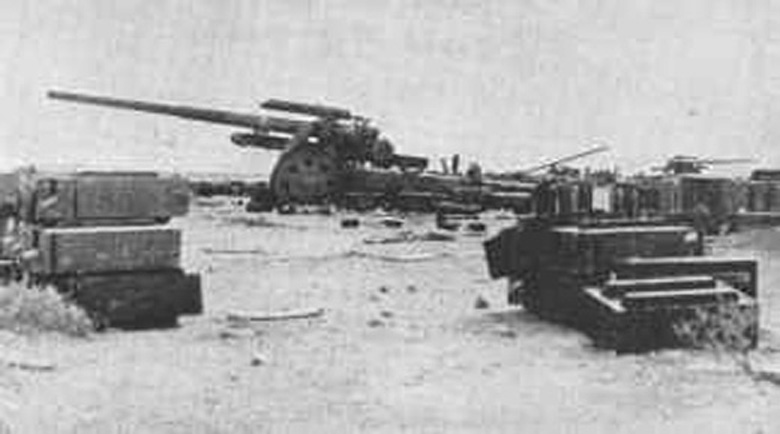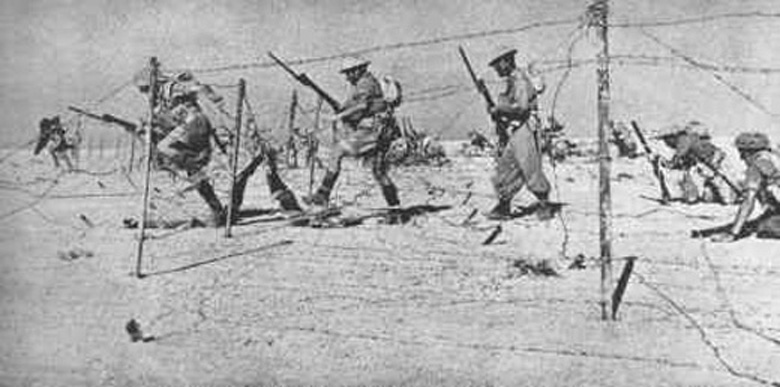Battle of the Atlantic
- The German 2nd Motor Torpedo Boat Flotilla attacks Convoy FS-650 off Great Yarmouth. The British tanker War Mehtar (5502t) is sunk by S-104. The entire crew are rescued. S-105 sinks the British steamer Aruba (1159t) with the loss of 1 of her crew. The British steamer Waldinge (2462t) is badly damaged by S-41 with the loss of 1 of her crew. The damaged ship sinks on the 20th.
- The British submarine Rorqual lays a minefield off La Rochelle, France. The French trawler Coligny (600t) sinks on a mine in this minefield.
Reinhard Heydrich with the Crown Jewels |
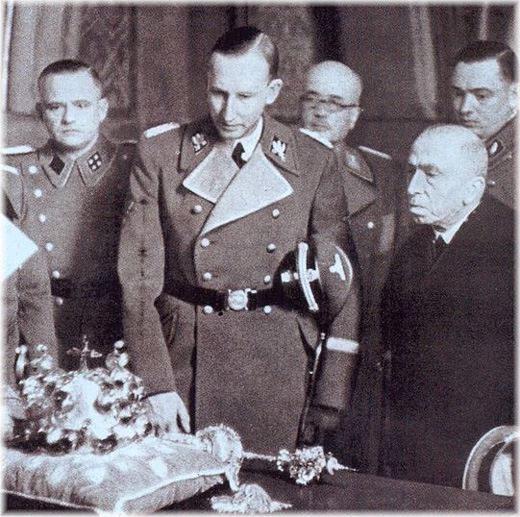 |
Eastern Front
NORTHERN SECTORFighting around Tikhvin intensifies as the 4th Army's northern group fights to cut the Tikhvin-Volkhov road and prevent the German withdrawal while the southern group aims to cut the Tikhvin-Budogosh road. The Germans move the 61st Infantry Division up to reinforce the Tikhvin sector. the 52nd Army continues to batter the XXXVIII Corps at Malaya Vyshera.
CENTRAL SECTORAttacks by the 3rd Panzer Group has forced apart the 16th and 30th Armies, prompting the West Front to form Group Zakharov with 3 divisions and 2 brigades to cover the gap in the line before Klin. To reinforce the 30th Army, Zhukov moved the 58th Tank Division, with just 350 men and 15 tanks, from the 16th Army.
A new thrust by the 4th Panzer Group hits the right wing of the 5th Army, pushing it back toward Zvenigorod and threatening its junction with the 16th Army. In an effort to prevent an immediated collapse, the Stavka diverts a rifle division and tank brigade from the already under strength 33rd Army to the 5th. To cover the increasingly exposed Volokolamsk-Istra axis that is being hard pressed by the 4th Panzer Group, the Soviets have 3 rifle and 2 cavalry division plus tthe 1st Guards Tank Brigade. The slow pace of the advance comples Hoeppner to commit the XL Panzer, IX and V Corps to the attack.
SOUTHERN SECTORThe III Panzer Corps fights its way through the heavily defended streets of Rostov. Fighting is extremely bitter as the 56th Army defends every street, exacting a high price on the 14th Panzer Division as it pushes deeper into the city. The 60th Motorized Division is involved in heavy fighting as it tries to protect the exposed flank and rear of the 14th Panzer. To the north the 37th Army launches a fierce attack and routs the XIV Panzer Corps, throwing it back and threatening the rear of the III Panzer Corps in Rostov.
[German Raiders
The Australian light cruiser Sydney finds a suspicious ship disguised as a Dutch merchantman in an area about 170 miles west of Western Australia. After an exchange of signals the Sydney rashly approaches close to the ship which opens fire with guns and torpedoes crippling the cruiser with the first salvo. The ship is in fact the German raider Kormoran. Sydney manages to fight back and both ships later sink. The Kormoran has sunk 11 ships of 68,300 tons during its cruise. News of the battle only becomes known when some of the crew of the Kormoran are found later on a South Pacific island. 76 crewmen are lost on the German ship. There are no survivors from Sydney; over 600 are lost. This is the only case of a mercatile auxiliary cruiser sinking a regular warship of any size during the war.
HMAS Sydney |
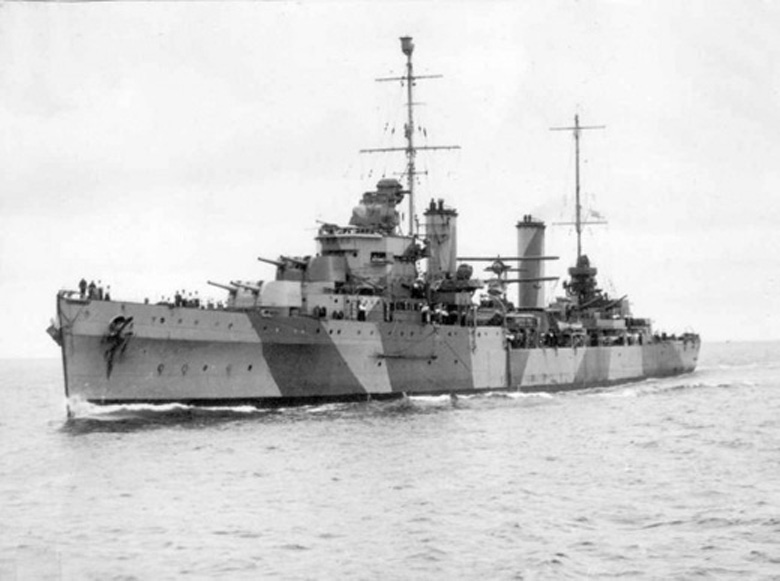 |
North Africa
During the morning the 7th Armored Div splits up searching for Rommel. The 7th Armored Bde heads for Sidi Rezegh, the 22nd Armored Bde on its left flank makes for Bir el Gubi, and the 4th Armored Bde stays at Gabr Saleh except for the 3rd Battalion of the Royal Tank Regt whic moves northwest after the German light forces.
The British 7th Arm Bde advances easily to Sidi Rezegh but on the left flank the other parts of 7th Arm Div are heavily engaged. At Bir el Gubi,on the left flank of the British line, Brig John Scott-Cockburn's 22nd Armored charges the Italian positions. The Italian Ariete Division puts up a stout resistance to a wasteful, unnecessary and badly conducted attack by the 22nd Armored Bde. 34 Italian tanks are destroyed, 15 are damaged and 12 guns are knocked out. 25 British Crusaders are destroyed while the Italians still hold their ground.
On the right flank Brig Alexander H. Gatehouse's 4th Armored Bde with the 8th Hussars and 5th Royal Tank Regiment charges into the 5th Panzer Regt under Lt-Col Stephen. The Germans lose 3 tanks, the 4th Armored Bde loses 23 Stuarts, 12 of which are repaired later.
Brig George Davy's 7th Armored Bde is the most successful this day. About 1630 it overruns the Sidi Rezegh airfield destroying 19 planes on the ground.
Both British and Germans would have done better to concentrate their forces. The British have more than 40 tanks out of action already whereas the Germans have lost only a handful.
|
|
|
|
